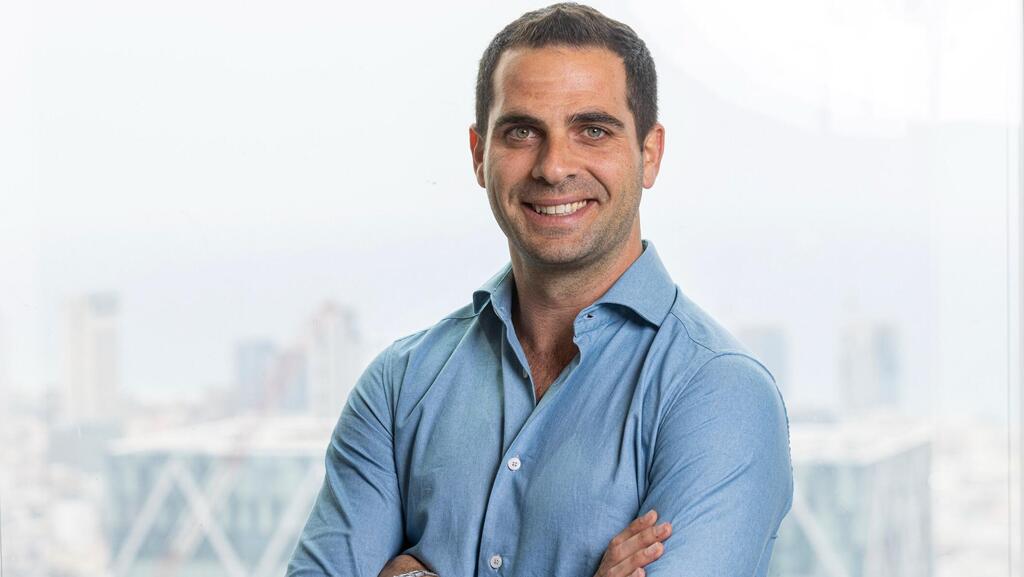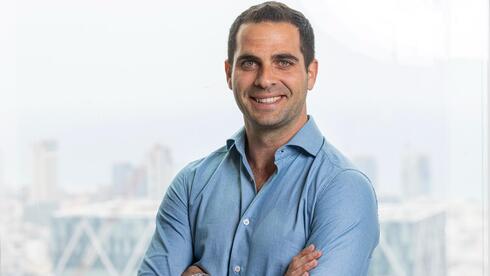
HR in the AI era
Pagaya: AI's role is "augmentation, not replacement, of human labor"
Pagaya is focused on using AI to realign its “focus areas,” accelerating delivery capabilities without changing overall headcount. Still, its SVP, Global Head of People, points to a gap in tech adoption and the ongoing need to assist employees in staying ahead of the curve.
“AI's role in our organization is primarily augmentation, not replacement, of human labor,” said Itay Ezra, SVP, Global Head of People at Pagaya Technologies. “Where processes were once manual, AI has now introduced automation, allowing us to shift our talent's focus to tasks that inherently require human insight and creativity.”
CTech’s "HR in the AI Era" series explores how the AI revolution is impacting the workforce across Israeli high-tech companies. In this series, we uncover the effects (both personal and professional) that this technology shift has had on Startup Nation.
Within Pagaya’s HR department, Ezra says exposure to AI is intensifying. “Beyond established uses like prompt requests and application AI features, advanced agentic AI capabilities are emerging,” he explained. Beyond HR, he added that “our engineering team has significantly boosted its capabilities through AI”.
You can read the entire interview below.
Company name: Pagaya Technologies
Your name and title: Itay Ezra, SVP, Global Head of People
Names of founders and upper management: Gal Krubiner (Co-Founder & CEO), Avital Pardo (Co-Founder & CTO), Yahav Yulzari (Co Founder & CRO), Sanjiv Das (President)
Year of founding: 2016
Investment stage: N/A
Total investment to date: Public company
Field of activity: FinTech
Number of employees: 450
Office location: Tel Aviv, New York
Number of open positions: 20+
On a scale of 1-10, how much does the AI revolution disrupt your company operation in general, and the HR department specifically?
7
Exposure to AI in HR is intensifying. Beyond established uses like prompt requests and application AI features, advanced agentic AI capabilities are emerging. A key example is the implementation of custom GPTs specific to our organization.
What interesting AI tools do you and your staff use in employee management/recruitment?
Our organization leverages advanced AI capabilities within specialized platforms for recruitment and employee engagement.
In recruitment, our platforms are integral to our talent acquisition strategy. Their AI features contribute to efficient candidate sourcing by intelligently filtering and identifying qualified individuals from extensive pools. This includes capabilities like AI-driven resume analysis for skill matching, automated candidate outreach personalization, AI-generated interview questions and scorecard attributes, and the ability to receive pre-filtered resumes directly from sourcing efforts. These functionalities enable our teams to conduct a more structured and effective hiring process, leading to faster identification of suitable candidates and ultimately, improved recruitment outcomes.
For employee engagement, our platform utilizes AI to enhance our understanding of workforce sentiment and drive proactive improvements. Its AI tools provide capabilities such as sentiment analysis of feedback, which allows us to quickly synthesize large volumes of qualitative data into actionable insights. Furthermore, features like AI-powered coaching tools offer personalized guidance for managers, translating insights into tangible action plans. This advanced analytical capacity enables us to identify engagement trends, address potential issues early, and foster a more responsive and data-driven approach to employee experience.
Related articles:
In which roles or tasks within your company has AI already begun to replace human labor (if at all)?
AI's role in our organization is primarily augmentation, not replacement, of human labor. Our engineering team has significantly boosted its capabilities through AI.
AI systems handle repetitive and data-intensive tasks, streamlining workflows and accelerating outputs. This allows engineers to focus on complex problem-solving and innovation, leading to enhanced efficiency and elevated performance.
What are the two major challenges you are coping with these days?
We're actively navigating two primary challenges with regard to AI: ensuring compliance and regulation for safe usage, and managing technology adoption.
The first challenge involves meticulously aligning our AI deployment with evolving regulations and establishing robust internal compliance frameworks. This is crucial for ensuring the ethical and secure use of AI across all operations. As Pagaya is recognized by some of the most highly regulated entities globally, every aspect of our work undergoes extensive scrutiny and approval. Therefore, a significant challenge lies in balancing the introduction of new, groundbreaking technology with the financial market's capacity to approve and comprehend it.
Secondly, we're addressing the complexities of technology adoption. This involves overcoming both technical hurdles related to AI integration and the human element of widespread adoption within the organization. New technologies are continuously introduced, requiring us to train our people on how to effectively utilize them. This creates a gap between the introduction of innovative technologies and the workforce's ability to learn and apply them. We're focused on smoothing these transitions to fully harness AI's potential.
Have you experienced workforce-related challenges due to the war, and are you still feeling the impact of the security situation on your human resources?
In the challenging time of the war, we prioritize our employees' well-being, standing firmly by them and ensuring business continuity through a multifaceted support system. We meticulously mapped our workforce into categories like reserve duty, those impacted by direct strikes requiring evacuation, and employees stranded abroad, allowing for tailored assistance. This individualized approach includes critical actions such as providing computers to critical staff stuck overseas, alongside broader initiatives for the entire team. We also offer individual emotional support tailored to specific needs, including direct assistance for our evacuated employees.
To combat the pervasive anxiety of the conflict, we arranged two professional counseling sessions and offered two engaging Zoom activities for children, acknowledging that all kids are out of school or daycare. Furthermore, we dispatched customized care packages filled with activities for employees to engage with while in shelters. Simultaneously, we strategically identified and mapped critical functions and personnel to ensure uninterrupted business operations.
Throughout this period, we maintain constant, transparent communication with all employees, facilitated by direct managers and leadership, fostering a sense of connection and reassurance.
Have you made changes to your workforce following the increased use of AI tools, both in terms of headcount and internal shifts between departments?
No, we have not made changes to our overall headcount as a direct result of increased AI tool usage. Instead, our strategy has been to realign focus areas. Where processes were once manual, AI has now introduced automation, allowing us to shift our talent's focus to tasks that inherently require human insight and creativity. This approach significantly enhances our efficiency and accelerates the company's delivery capabilities.
How does the global market uncertainty affect your workforce, in terms of employee numbers or departmental reallocations? Are you scaling your workforce up or down in different regions around the world?
Changes in market expectations significantly impacted our strategy, directly leading us to prioritize and then to successfully achieve profitability. This strategic pivot, rooted in our relentless focus on operational efficiency and agile adaptation, inherently necessitated adjustments to our workforce.
Our core strategic objective has been to achieve profitability, a goal we successfully met through a relentless focus on operational efficiency and agile adaptation. This commitment is deeply embedded in how we've navigated global market dynamics, which necessitated strategic decisions regarding our workforce. These dynamics have driven a proactive strategic realignment of our workforce, enabling us to optimize our team structures for enhanced agility and efficiency. With these measures successfully implemented, our current outlook is exceptionally positive and optimistic.
Do you estimate that in 2025–2026 you will increase or decrease the number of personnel? Explain why.
Having recently achieved profitability, we are exceptionally positive about our future outlook. Based on our current business planning, we don't foresee major changes in our personnel numbers for 2025-2026. Our focus remains on optimizing existing structures and leveraging our technological advancements. However, this projection is subject to continuous evaluation, adapting as needed to macroeconomic shifts and broader market dynamics.
